


Loading...
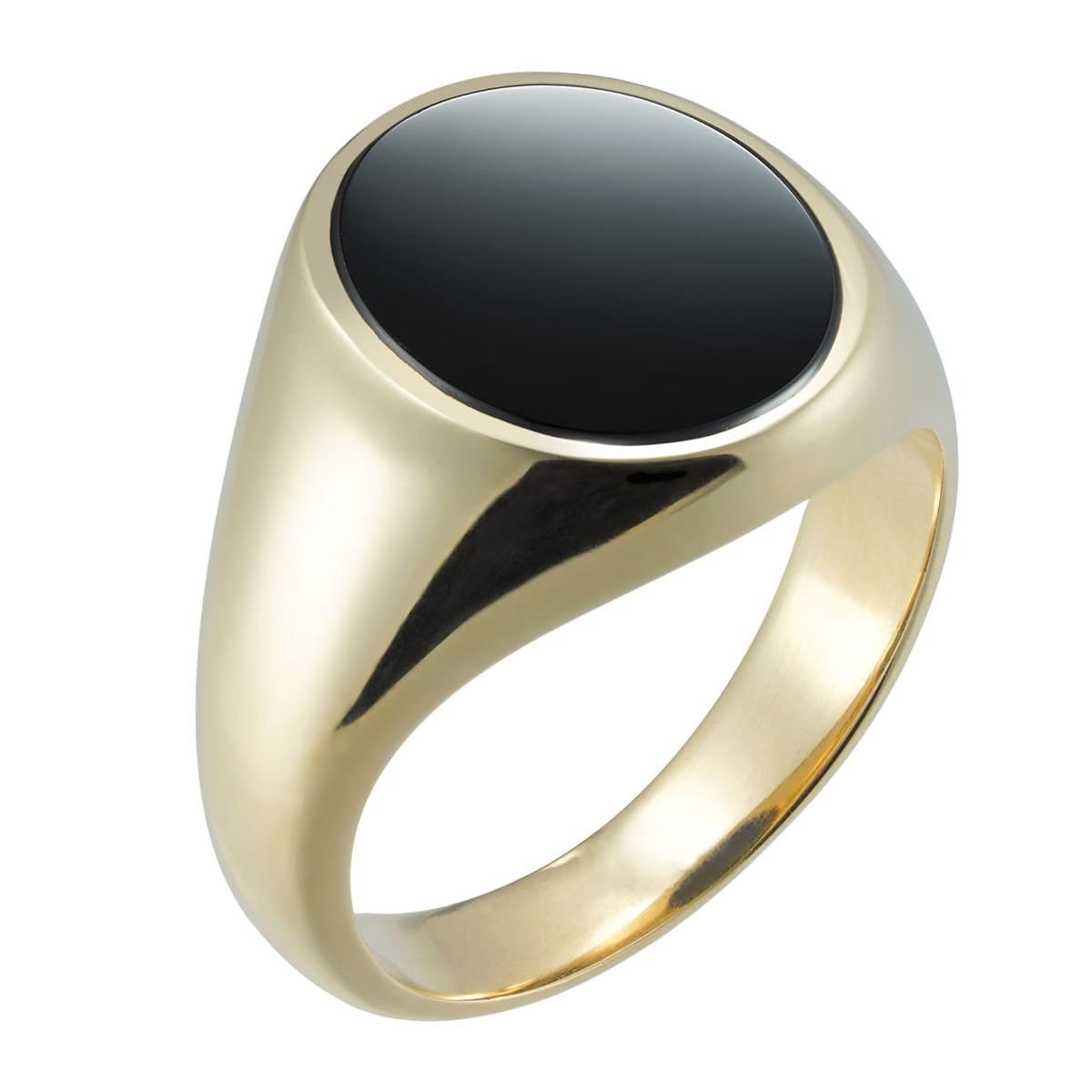
Onyx is a stone that comes in many colours but is typically used in jewellery in its deep black form. Black onyx was used in Ancient Egypt and Rome and was often used in both ornamental ways and for carved gem set jewellery. Black onyx was very popular in Art Deco jewellery, as its rich black colour contrasted beautifully with diamonds and platinum. Black onyx looks striking when carved and set into a signet ring of any colour gold or silver.

Carnelian, sometimes spelled as cornelian, is a warm, opaque orangey-brown stone that has been used for the carving of intaglios set into signet rings and seals for thousands of years. Examples of carved carnelian date as far back as the bronze age but were used commonly in the ancient Roman period. Carnelian takes carvings beautifully and looks lovely set in precious metal of all colours.
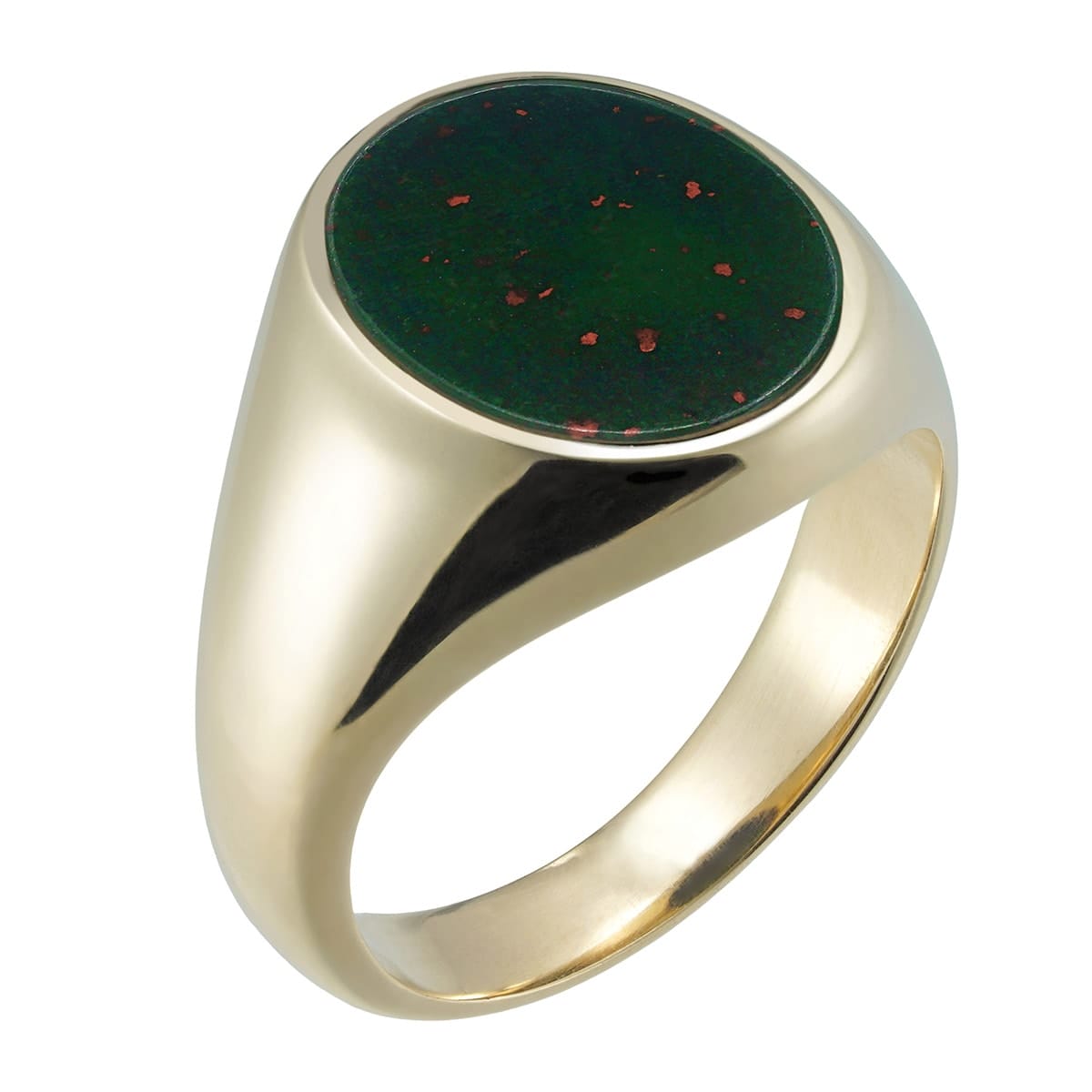
Bloodstone is a stone that is often seen in signet rings. It features a smooth and appealing dark green colour, flecked throughout with specks of red, which lends it its characterful name. Throughout history, bloodstone has been revered and used in a variety of different ways. Its qualities as a hardstone make it particularly well-suited to carvings, and it has been used for intaglio and signet rings for thousands of years. Greek and Roman athletes favoured it as talisman for success in their games. The traditional gold signet ring is often set with a fine bloodstone.

Sardonyx is a related to black onyx but features bands of pale bluish white colour. Sardonyx’s subtle banding makes it perfect for carvings, and it has been used in jewellery for thousands of years. The ancient Romans entered battle carrying amulets of sardonyx engraved with Mars, the god of war, as it was believed to bestow courage in battle. Sardonyx set signet rings have a beautifully and sophisticated appearance.
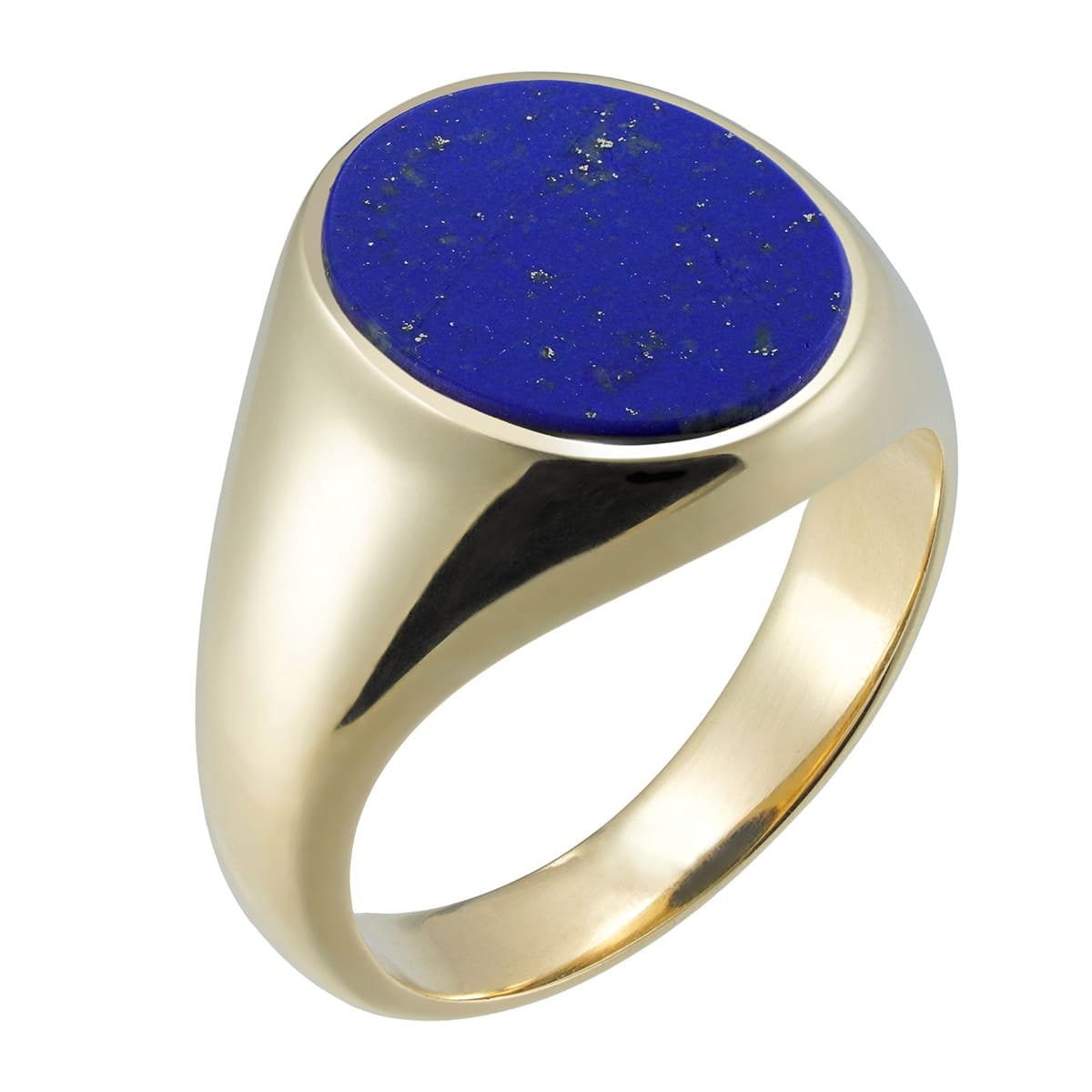
Lapis Lazuli is a dark blue stone, often flecked with gold pyrite. It has been carved into beautiful forms in the Middle East for millennia. In Western Europe, Lapis Lazuli has been used for the carving of precious ornaments and intaglios. During the medieval period and the Renaissance, Lapis Lazuli was prized for its deep colour and ground to produce the pigment ultramarine. Its rich deep blue colour contrasts beautifully with the tones of 18 carat gold which is picked up in its golden flecks of pyrite.
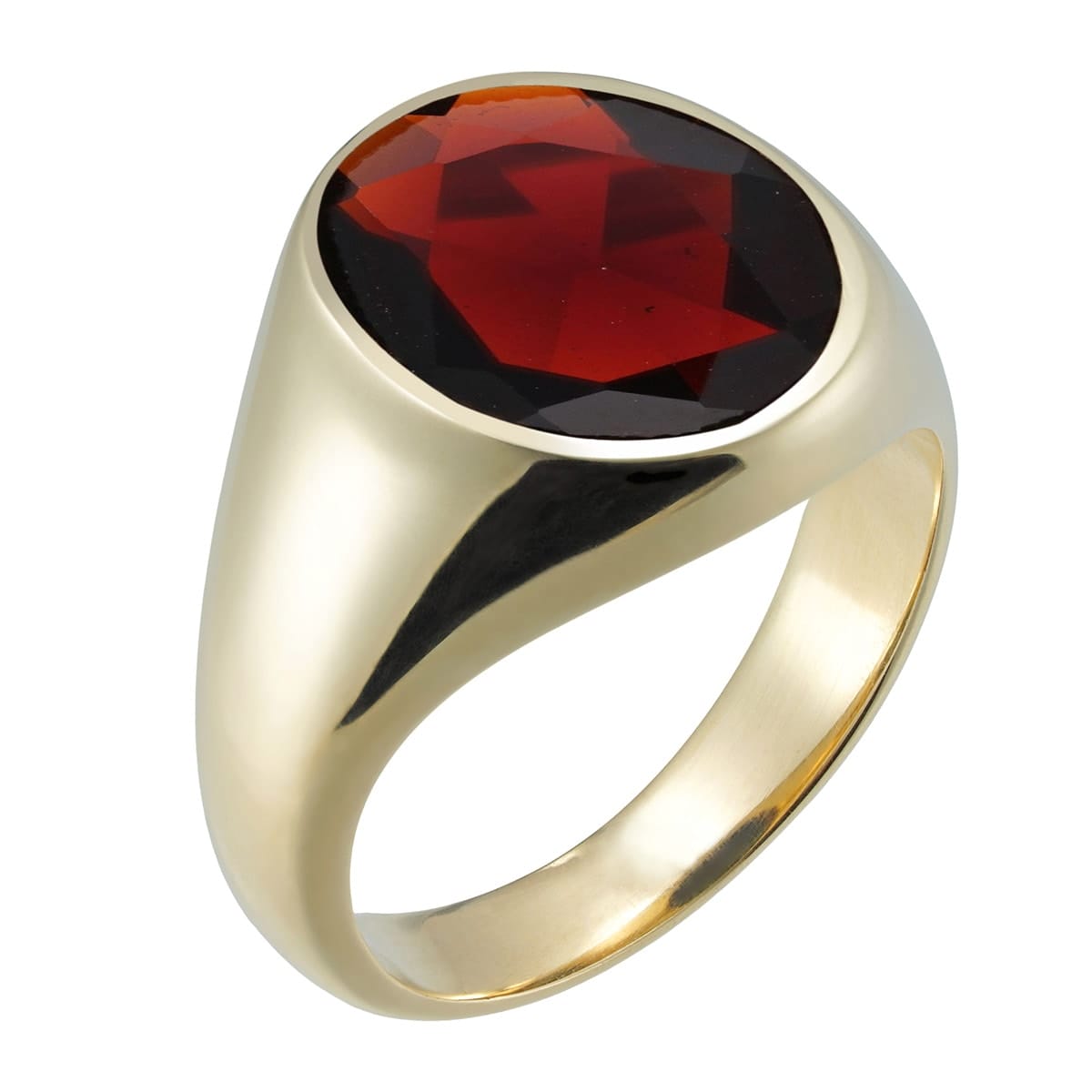
Garnets come in many different colours, but the most well-known is the deep red typically used in Georgian and Victorian jewellery. Garnets were often set into Ancient Roman signet rings, carved with personal seals, and used to sign important documents. The beautiful red glow of the garnet has enchanted for thousands of years and continues to be a striking and appealing stone with which to set a signet ring.
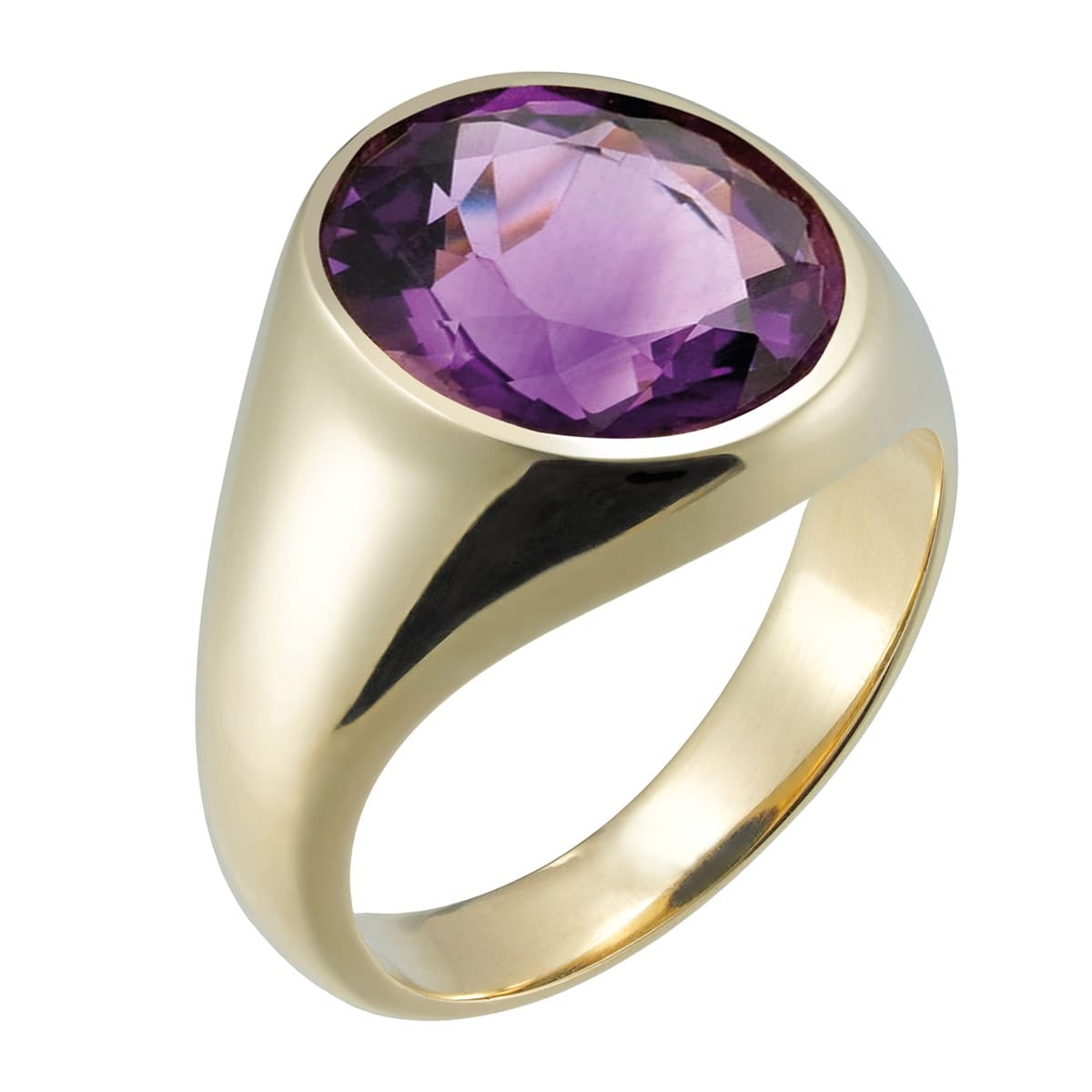
Amethyst is the purple colour variety of the gemstone quartz. Amethyst has been used for jewellery for thousands of years, with examples of carved amethyst found in necklaces dating back 4,000 years. In ancient lore, amethyst was associated with Bacchus, the god of wine, due to the purple hue of the stone. Its rich colour lends itself perfectly as a carved gem in a signet ring.
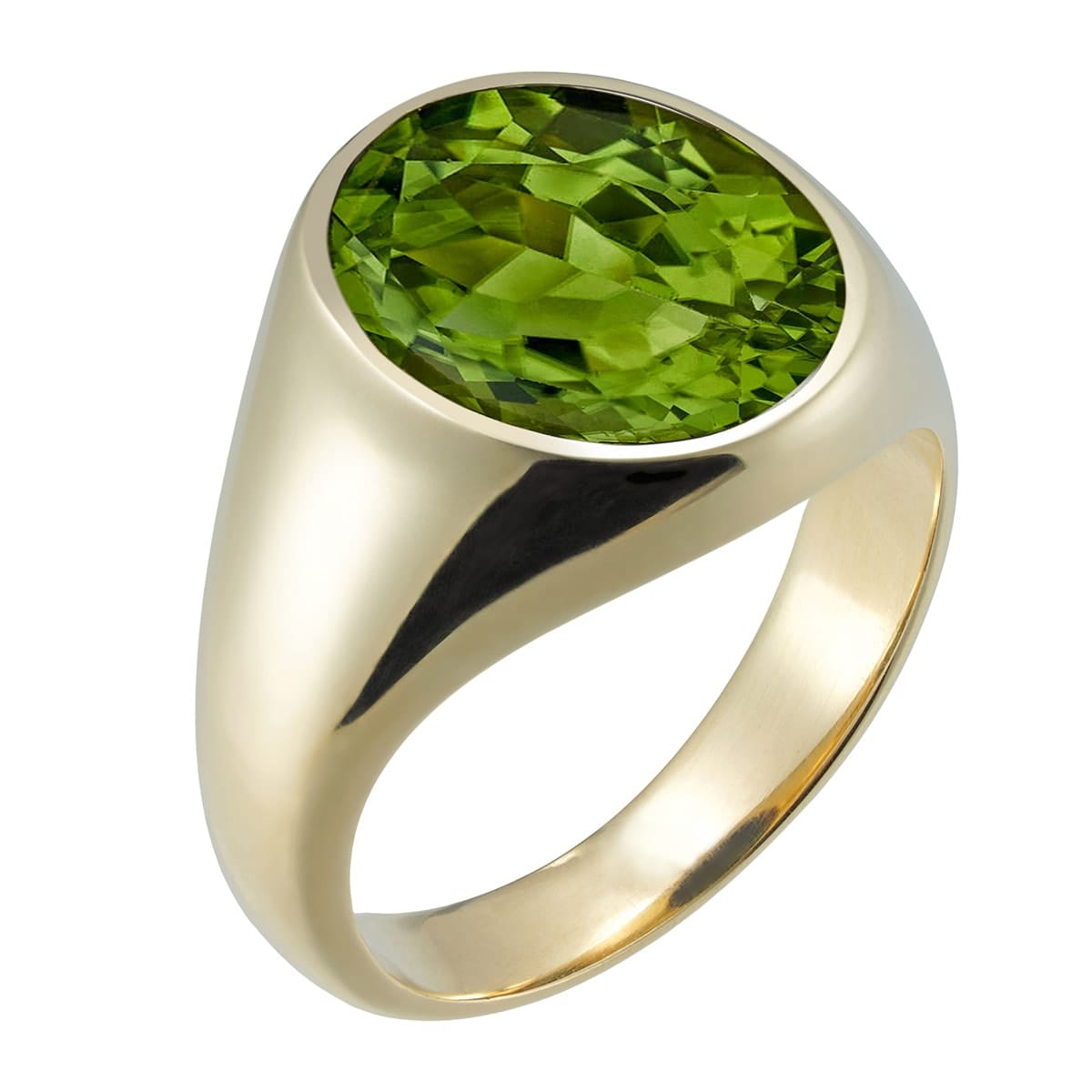
Peridot is a lovely transparent gemstone known for its bright and vibrant olive-green colour. With its back typically cut faceted, it catches the light beautifully and looks wonderful set in all colours of metal. In Ancient Egypt, peridot was referred to as the ‘gem of the sun’ and has been prized for thousands of years for its beauty. Set in a signet ring and carved with a crest, it sparkles magically.
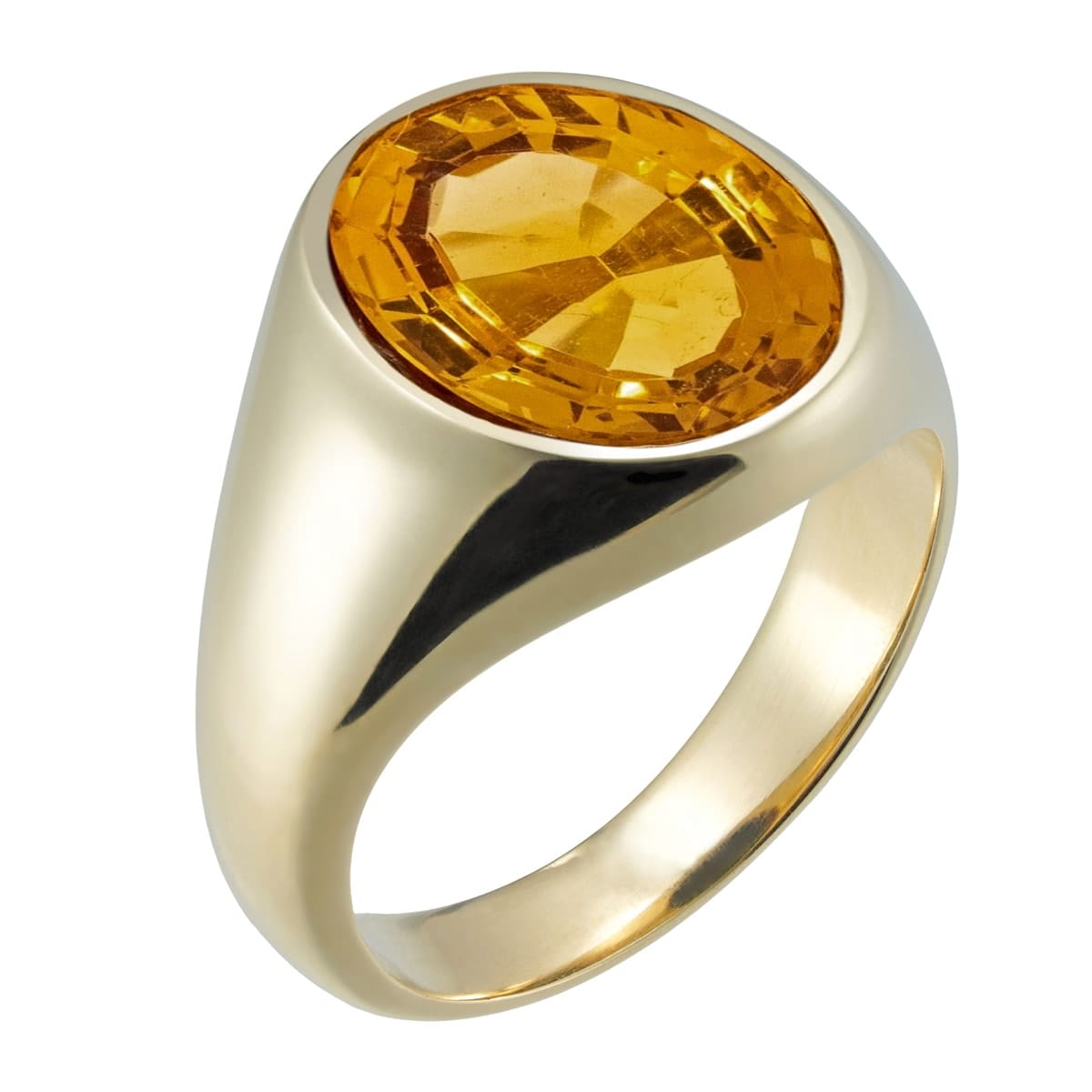
Citrine is the yellow colour variety of the gemstone quartz. Citrine was prized in Ancient Greece and used as a protective amulet. Citrine was popular in gem-set jewellery of the seventeenth and eighteenth century and was often set with yellow gold which perfectly complimented the sparkling, faceted, yellow stone. Set in a signet ring, it catches the light beautifully and is a wonderful choice for a stone-set ring.